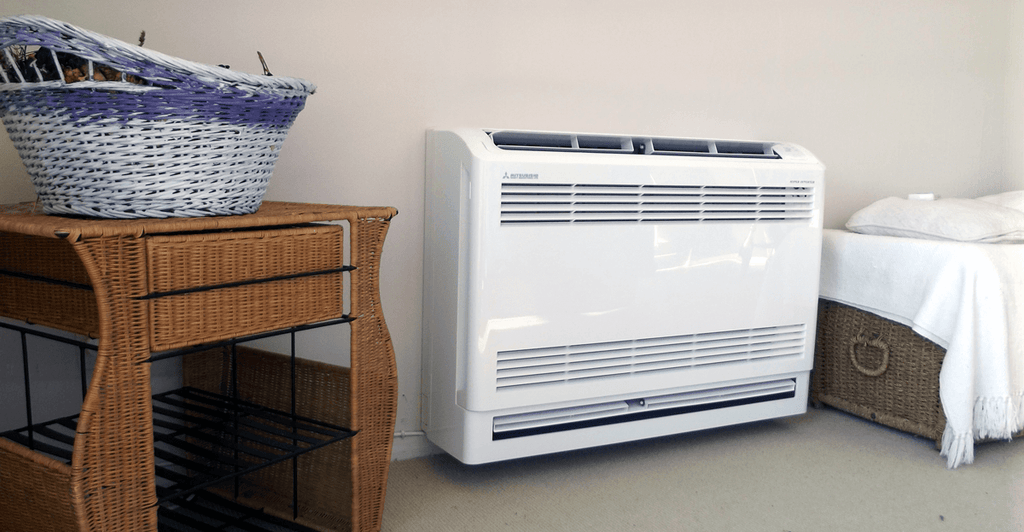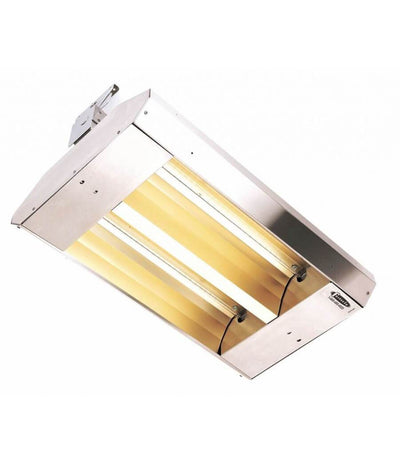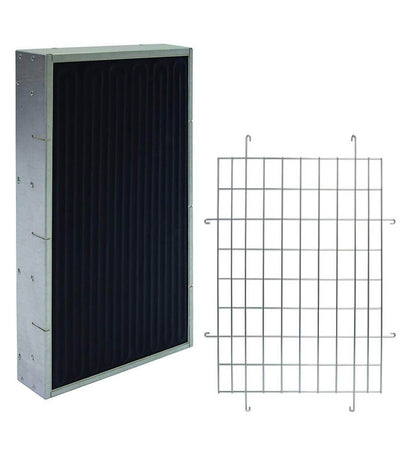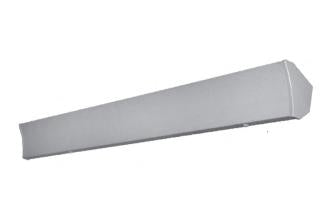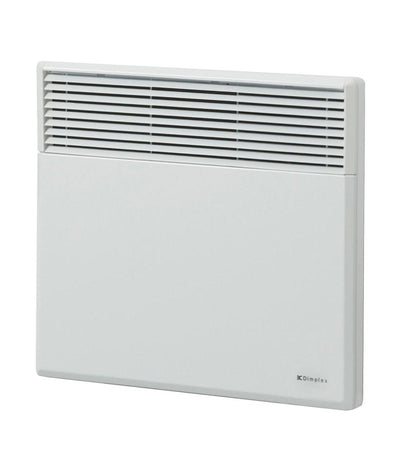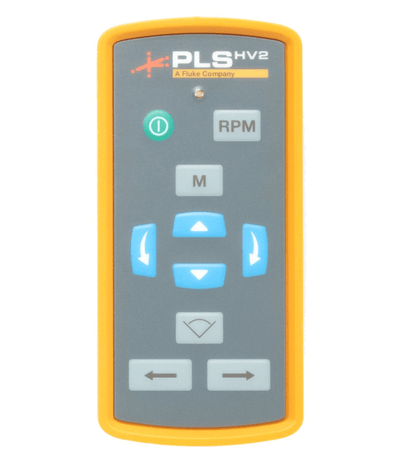Infrared heaters, also commonly called radiant heaters, are some of the most common solutions when it comes to heating needs. Unlike other types of heaters, these devices don’t depend on air molecules. Rather, they warm up spaces with the use of invisible infrared light waves--much like how the sun warms an exposed space, but without the UV rays.
In this article, we will learn more about how infrared heaters work and how they are beneficial to the people who use them. We will look into some of the most important questions that buyers ask. Are these heaters safe? Are they energy-efficient? How do they work? What are the pros and cons? If you’re curious about at least one of these questions, then keep reading. The answers are only a few scrolls away.
Infrared Heater Basics
The term “infrared heater” is a general name. There are several types of heaters classified as infrared or radiant devices, but they have some variations in terms of energy source, construction materials, maximum output levels, prescribed applications, and, of course, design and appearance.
1. How They Work
Infrared heaters are designed to warm objects similar to how the sun does. If you are outdoors and sun-exposed, you will naturally feel warmer. However, if you decide to rest on a shaded location, thereby blocking the heat, then you wouldn’t feel as warm.
Unlike convection heating that heats up the air, infrared heaters warms the objects near it through radiant energy or light waves. Our skin and other objects can absorb these waves, which then leads us and the objects near the heater to feel warmer. Because infrared heaters don’t depend on air molecules, they can be used for a variety of purposes and places.
Infrared heaters should ideally be installed at locations where heat is needed most, especially because--except for some models that come with a fan--these heaters don’t circulate air and, therefore, don’t spread the heat throughout an entire room. When used, the heat from infrared heaters will first affect those objects or people who are in the device’s line of sight.
2. Heat Sources
Infrared heaters are powered by electricity, propane, or natural gas. Each type has its own ideal application as well as its own share of pros and cons. When it comes to heat source or heating element, several materials can be used, the most common being ceramic tile, stainless steel, nichrome wire, glass, and quartz. Whatever heating element is used, this element works by emitting heat in the form of infrared radiant energy. Then, a reflector directs heat to the people and the objects near the device.
Electric infrared heaters are generally convenient for indoor use. Depending on their heat output, they may be placed in small rooms, like a bedroom or an office, or big rooms like garages and warehouses.
Heaters that run on propane or natural gas, on the other hand, are recommended for outdoor use. They are ideal for patios, restaurant decks, and outdoor or semi-outdoor job sites. They generally have better portability than electric heaters, but they can also be more challenging to install. Natural gas infrared heaters, in particular, should be installed only by a knowledgeable technician.
3. Safety
There’s no reason to worry about safety if infrared heaters are used according to the manufacturer’s specifications. Your heater unit should have an indication of how much voltage it needs to operate. Thus, to avoid dangers like short circuit and overload, you should always make sure that the heater is connected to a suitable power outlet.
Infrared heaters are generally health-friendly since they do not use air molecules and do not affect a room’s or a place’s oxygen and moisture levels. They are even ideal for livestock heating because of these reasons. They also do not cause the usual problems associated with other heaters, such as dry skin and static electricity. Also, because they do not move the air, they do not disperse dust and other particles that can cause allergies and respiratory problems.
Infrared heaters produce heat similar to what the sun produces, minus the harmful UV rays. As such, just like sunlight, infrared heat can help in improving blood circulation and you immune system. This is primarily the reason why some saunas, yoga studios, and gyms use infrared heaters. You must note, however, that just as prolonged exposure to the sun is harmful, staying too close to an infrared heater--particularly the high-intensity ones--for too long can have some negative effects as well. This might include itching and a burning sensation in the eyes.
In terms of environmental health, infrared heaters are some of the most eco-friendly choices since they do not convert oxygen into carbon dioxide. Plus, if you use an electric variety, then that device will release no pollution or harmful gases into the atmosphere.
Efficiency and Energy Use
In terms of energy efficiency, infrared heaters--specifically the electric ones--definitely beat all other types of heaters. This is because they utilize 100% of the electric energy they consume, with zero heat loss. Plus, their heating can be manually set to suit a user’s specific needs. You can immediately achieve your desired heating through an infrared heater, and then control it with the use of built-in or remote controls.
In choosing an infrared heater, it’s important to consider the location where you intend to use it. For instance, if you buy a small one then use it to warm a big warehouse, then you will no doubt fail at achieving energy efficiency. Different heaters are for different applications, and misapplication will hinder you from getting the results that you need.
This doesn’t mean that your bills will automatically plummet down simply because you converted into using an appropriate infrared heater. Your overall energy consumption depends on several factors, and using an energy-efficient device is only one of them.
Types of Infrared Heaters
There are several ways to classify the different types of infrared heaters. Aside from classifying them according to their energy source and heating element, they may also be grouped according to heat output intensity and application.
1. Low-Intensity Tube Heaters
Also called positive or negative pressure heaters, low-intensity tube heaters heat up their exchangers at a temperature considered as low-intensity. This temperature usually ranges between 1110° to 1350° Fahrenheit.
These heaters generally harness air for combustion. Once heat is absorbed by their heating element, this heat is then directed to the floor level and then absorbed by the objects and people in the heater’s line of sight.
2. High-Intensity Ceramic Heaters
As their name suggests, high-intensity heaters produce high temperatures, usually above 1350° Fahrenheit. This type of heaters is ideal for both total building heating and spot heating. However, for safety purposes, the rule of thumb is that devices with higher heat output should have higher clearance for combustible materials.
These heaters are usually direct-fired, which means that they use gas combustion to work. For this reason, experts recommend using these heaters in well-ventilated spaces or those with high air change. This practice allows gases to dissipate and prevents risks like carbon monoxide poisoning.
3. Personal Infrared Space Heaters
These heaters are designed for small areas, such as living rooms, bedrooms, and small offices. Some units can be permanently installed on a wall, while others are portable and may be placed on a floor or tabletop.
4. Outdoor Infrared Heaters
Outdoor infrared heaters, like patio heaters, are proven safe for outdoor application. They can produce heat that can warm up a condensed area, so they’re perfect for places like patios and restaurant decks.
5. Garage/Industrial Infrared Heaters
Because garages and industrial sites are bigger and require more heat than residential rooms, they need heaters that have larger output. If you’re in a store looking for a heater like this, it’s best to mention early on where you intend to use the device. This way, it will be easier to filter your choices according to application.
6. Construction Heaters
Also called tank top heaters, construction heaters are usually used for spot heating. They may be used outdoors and indoors during building construction or repair. Construction heaters should never be used in residential purposes.
Pros and Cons of Using Infrared Heaters
As we have previously tackled, infrared heaters have several benefits in terms of being energy efficient, eco-friendly, and safe to use. They’re also especially beneficial when immediate heating is needed. Unlike convection heaters, infrared heaters don’t take a long time before they take effect. Instead, they instantly emit a beam of heat when turned on, which warms you up rapidly.
Aside from this, infrared heaters also work silently. Since they simply radiate light to transfer heat, they do not produce any noise at all. This makes them ideal for bedrooms, libraries, and workspaces where noise is an intolerable distraction.
They are also generally easy to maintain. They don’t have a motor, fan blades, and air filters that need frequent checking. Rather, you simply have to make sure that their reflectors are clean. If you aren’t comfortable to do it yourself, especially for large infrared heaters, then don’t hesitate to hire someone who can provide expert maintenance services.
Just like any device, infrared heaters have some disadvantages as well. One of them is that their reflectors can get too hot and become hazardous to children, pets, and flammable materials placed too close to the device. Some heater units are made with protective cabinets to address this, but these cabinets aren’t always practical, especially outdoors.
Another disadvantage is that most infrared heaters don’t do so well in large places. They’re typically great for warming up specific zones; if there are too many people in a room with an infrared heater, only those who are adjacent or near the heater will feel the benefit.
Also, infrared heaters immediately stop working once you turn them off. Since they do not warm the air, the warmth they provide immediately dissipates after use. Depending on your needs, this quality can either be an advantage or a disadvantage.
What Do Reviews Say?
With all the perks that infrared heaters offer, it is not surprising that more and more people are using them. However, as more modern designs become available, buyers are also opting to choose heaters that offer more advanced features.
According to some surveys, the features that many buyers look for include having a digital display, a thermostat, tip-over protection, overheat protection, a built-in humidifier, and the ability of a heater to work with remote control.
It also appears that most buyers prefer compact and portable designs over models that are too big and have to be permanently installed. Also, it’s noteworthy that the infrared heaters that buyers rank as the best all run on electricity.
In terms of brands, several infrared heater manufacturers are leading in the list. Known for their sleek and modern residential heater designs, Dr Heater, EdenPure, LifeSmart, Homegear, and Optimus appear in the list of the most preferred heaters. As for commercial and industrial heaters, TPI Corporation continues to rank as some of the best manufacturers that offer reliable and safe-to-use infrared heaters.
Infrared Heaters: Yea or Nay?
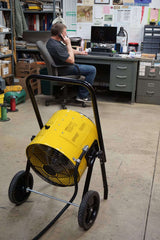 As we have already established, infrared heaters have their fair share of advantages and disadvantages. You will have to consider both sides when assessing if you should buy an infrared heater. Also, you have to decide on how much you are willing to spend. As attractive as modern heater designs are, they are also more expensive. The upside to that, however, is that you can save electricity and therefore lower your electric bills when you use an infrared heater over other types that incur heat loss.Infrared heaters--as many product reviews would support--are generally more energy-efficient and safer to use than other types of heaters. If these two are big factors for you, then infrared heaters are definitely a yeay. If other factors outweigh these for you, go on and give infrared heater a nay.
As we have already established, infrared heaters have their fair share of advantages and disadvantages. You will have to consider both sides when assessing if you should buy an infrared heater. Also, you have to decide on how much you are willing to spend. As attractive as modern heater designs are, they are also more expensive. The upside to that, however, is that you can save electricity and therefore lower your electric bills when you use an infrared heater over other types that incur heat loss.Infrared heaters--as many product reviews would support--are generally more energy-efficient and safer to use than other types of heaters. If these two are big factors for you, then infrared heaters are definitely a yeay. If other factors outweigh these for you, go on and give infrared heater a nay.
At the end of the day, the best heater for you is that which meets your unique needs, preferences, and budget. Here on Engineer Warehouse, you can choose from a variety of infrared heaters, convection heaters, and other types of heaters. Feel free to browse and see for yourself which model you like best.









